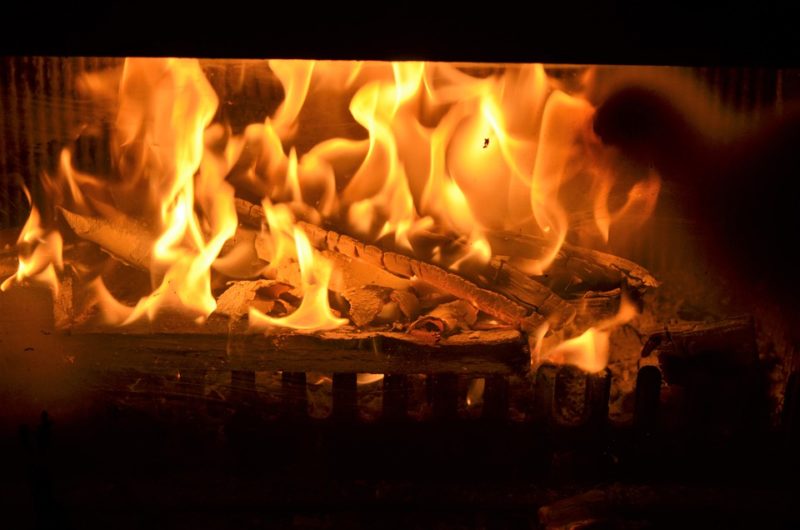Did you recently purchase a wood stove and realize that the stove pipe would not fit over the ceiling; so it’s probably time to learn how to run wood stove pipe through wall? If you want to cut down on your power expenditures, a stove is the greatest option for heating your house.
It is more ecologically friendly to use a stove that burns recyclable materials such as timber; that’s why it is an alternative for those who wish to get “clean.” However, it’s critical to correctly build a stove pipe since it might risk a fire.
Burner piping needs very little maintenance, so it’s usually good to regularly check for leakage or odd soot accumulation. Ensure no flammable items in the immediate vicinity might spark a fire. Please check to see if these stoves are allowed in your home. We’ll look at the most frequent ways to install stove pipes in newer homes, t what variables to examine, the type of stovepipes, and what to avoid. Let’s get started!
What’s A Stove Pipe?
It is critical to define what a stovepipe is and isn’t. Stove a pipe comes in a variety of sizes and functions similarly to chimney liner systems. They confine and send the hot vapors and gases created throughout the burning process outside. Stove pipework can aid in the additional heating of your apartment. They accomplish this by transferring and distributing hot air into your home.
Steps To Run Wood Stove Pipe Through Wall
As long as everything is implemented right, how to run wood stove pipe through wall is usually an effortless task. The usage of a “Through the Wall Kit” for stovepipe placement through the wall is something we endorse. These kits, in my experience, usually operate effectively and minimize time by eliminating the need to create several bespoke components and meticulously measure each one. Because various stove pipe manufacturers’ directions varied somewhat, carefully examine the manufacturer’s instructions before proceeding.
Step #1. Make a spot
Before starting the process, locate your pipe and stove in an appropriate area. It’s crucial to remember that the stove pipe needs a clearance room determined by the pipe design. For a single wall pipe, this is usually approximately 18 inches, although, for many double-wall pipes, it could be as low as 6 inches. You’ll have to get a 12-inch clearance in pipe and floor and ceiling if you place your pipe via an exterior wall.
Step #2. Mark it out using a ruler and a marker
Then another step is to use a pen or pencil to mark out the spots you’ll be cutting into the walls and figure out your needed clearance spaces. Simply draw out the circle and set a dot in the center using your wall thimble and flashing as a template. By evaluating the outer edges of the identifying marks, you can easily predict if you have sufficient clearance space.
Step #3. Start chopping and removing the wall
After you’ve highlighted it all up, you may start tearing down the wall. You can accomplish this with an angle grinder, but make sure you wear the protective gear. After that, you can quickly remove any insulating components by hand by cutting through the wood inside with a saw. Before undertaking any construction work on your home, check any interior cabling or plumbing. You also need to have drawn out the template required to eliminate the outer wall. A long screw driven through the wall to the exterior of your home using a drill is a simple option to do this. To guarantee that the dot is in the center, remember to utilize the dot you marked before.
Step #4. Attach the chimney to the wall
Start by adding the wall flashing and chimney piping after your wall is complete. It’s typically easier to connect and bolt it into place if you’re the one to assist you. Remember that wall straps must be installed every four inches to keep a clearance area and hold the chimney pipe.
Step #5. Connect the chimney pipe tee to the wall
After that, you’ll have to extend the chimney pipe into your wall and attach the exterior chimney pipe tee towards the interior wall thimble you’ll put on the inside wall. These come in various diameters, so check your wall thickness before selecting a chimney pipe component or a kit.
Step #6. Install the wood stove pipe
Connecting the chimney pipe to the interior wall thimble after that. The thimble is placed and fastened onto the external chimney pipe tee bracket in the same way that the tee bracket is installed and fastened onto the external chimney pipe tee bracket. Then, use your double or single-walled stove pipe instead of the high-temperature chimney pipe. You may also be interested to know about the common wood stove and chimnet problems.
It’s A Wrap!
We have answered you on how to run wood stove pipe through wall in depth. We hope you all have learned about it after reading this article. When installing a stovepipe through the wall, always use a single or double wall stove pipe. Thank you, friends, for being with us at the end! You may also want to read about why is my wood stove smoking and how to make wood stove look new.

